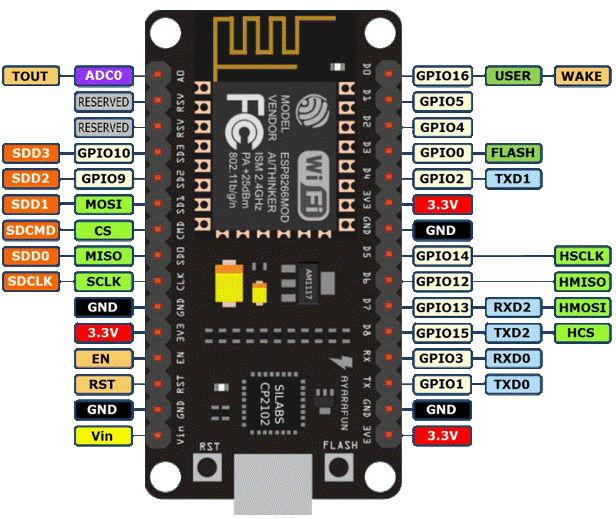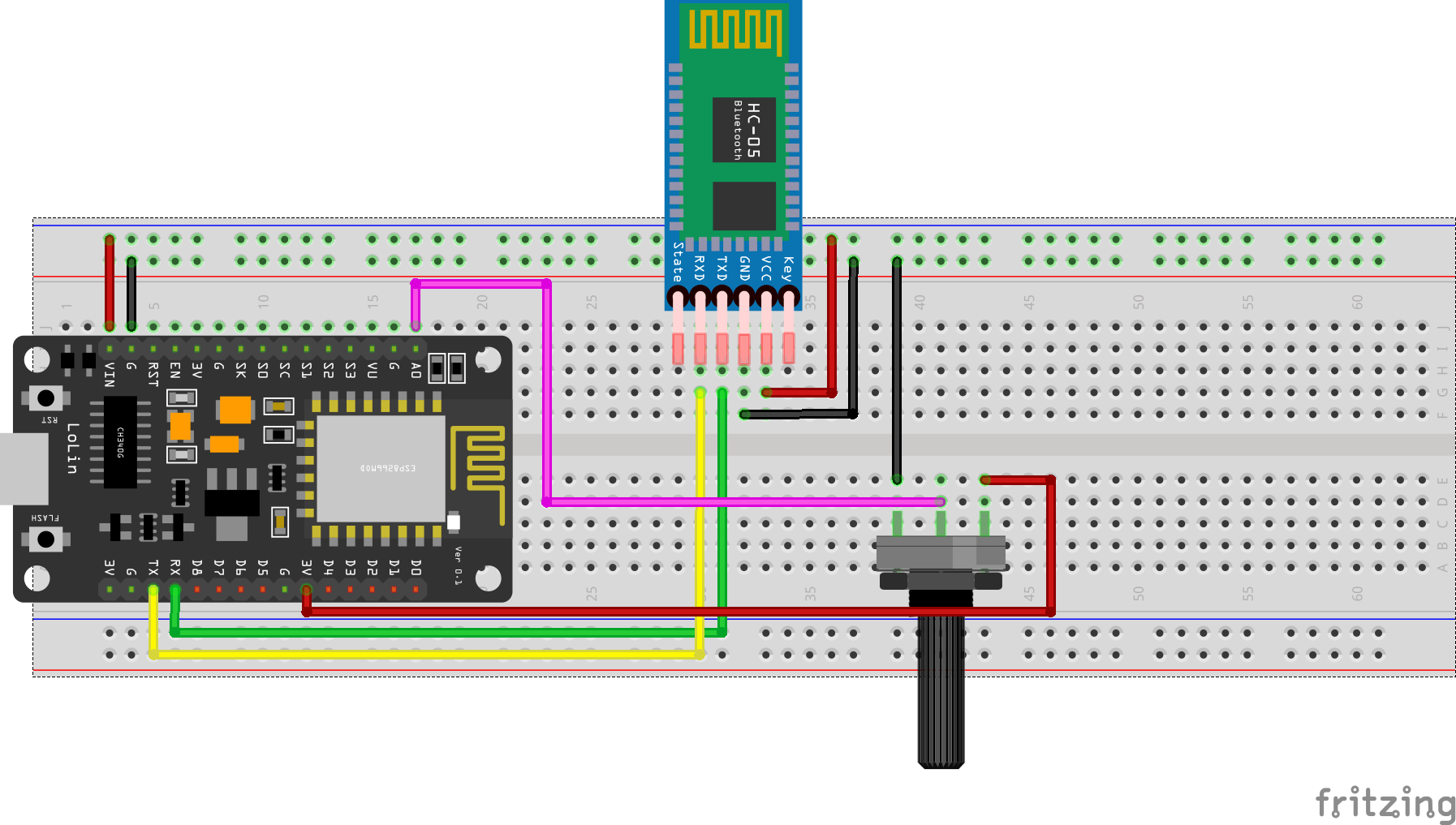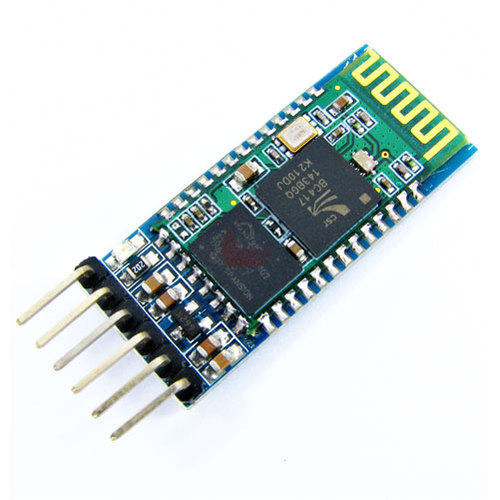HC-05 Bluetooth module
HC-05 Bluetooth specifications:
NodeMCU

Pin Configuration of NodeMCU
HC-05 Bluetooth and NodeMCU pin connections


int ANALOG_PIN = A0;
void setup() {
pinMode(ANALOG_PIN,INPUT); // SET A0 PIN AS INPUT MODE
Serial.begin(9600); // 9600 BITS TRANFERING TO PC PER SECOND
}
void loop() {
int ANALOG_VAL = analogRead(ANALOG_PIN); // READING THE VAULES FROM ANALOG PIN
Serial.println(ANALOG_VAL); // SENDING POT-VAULES THROUGH UART PINS TX,RX
delay(2000);
}
